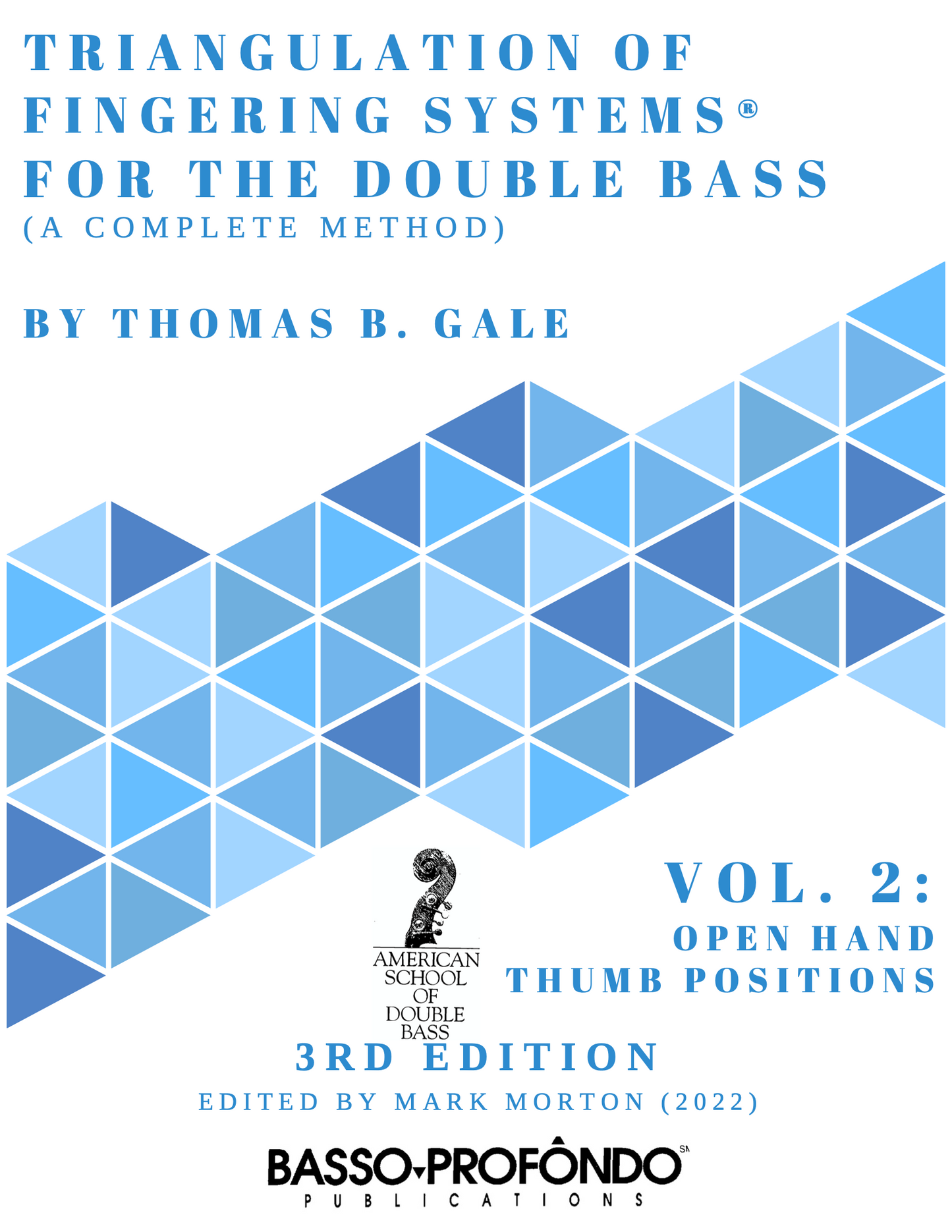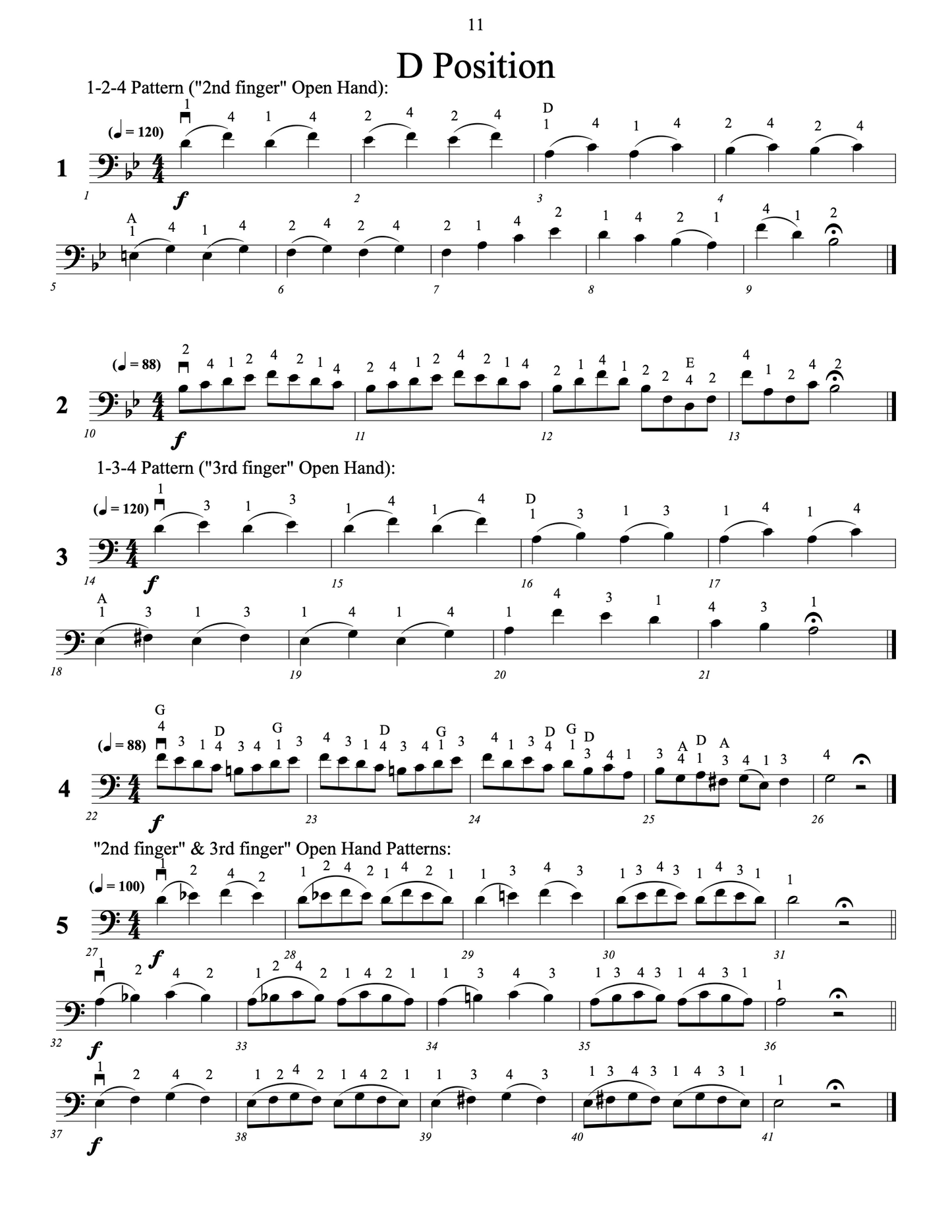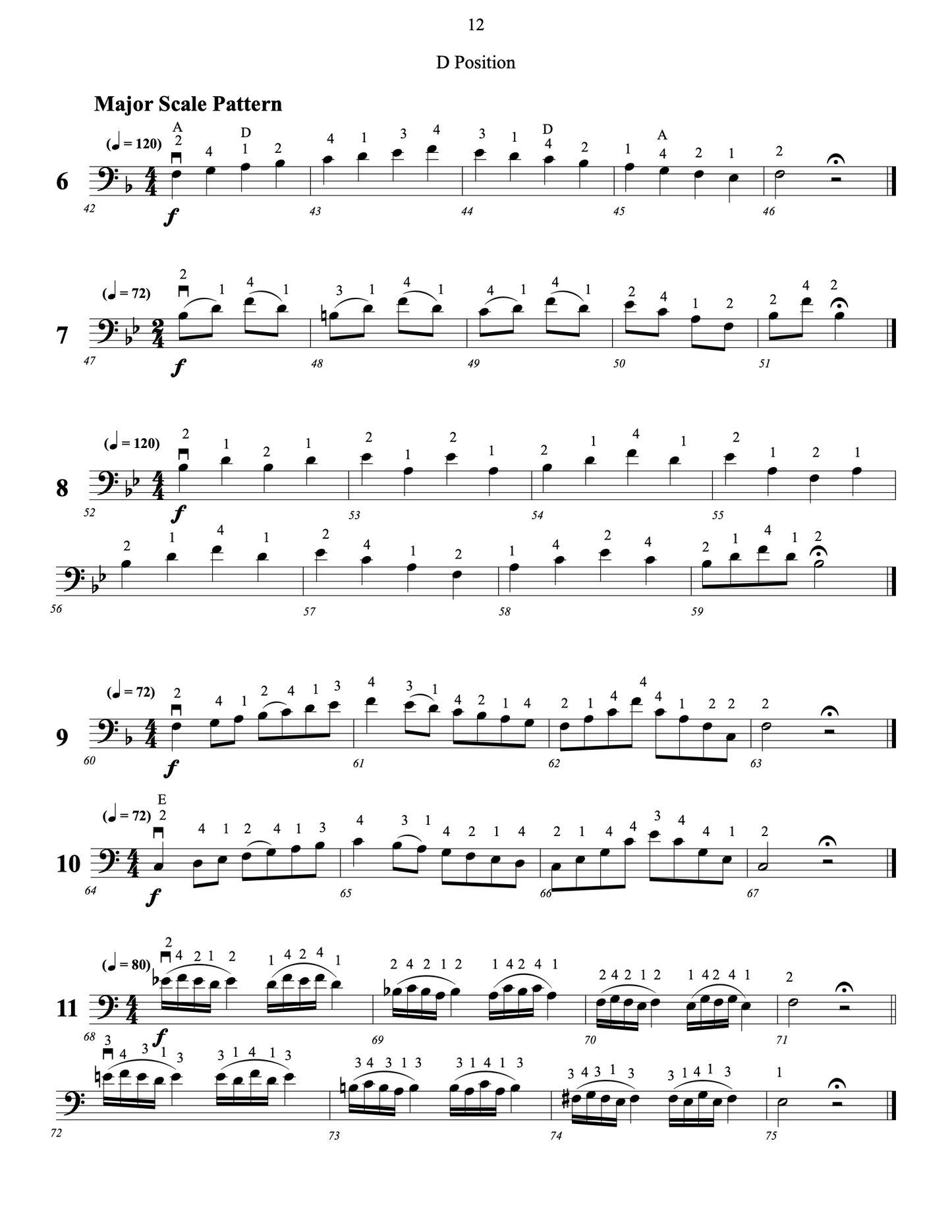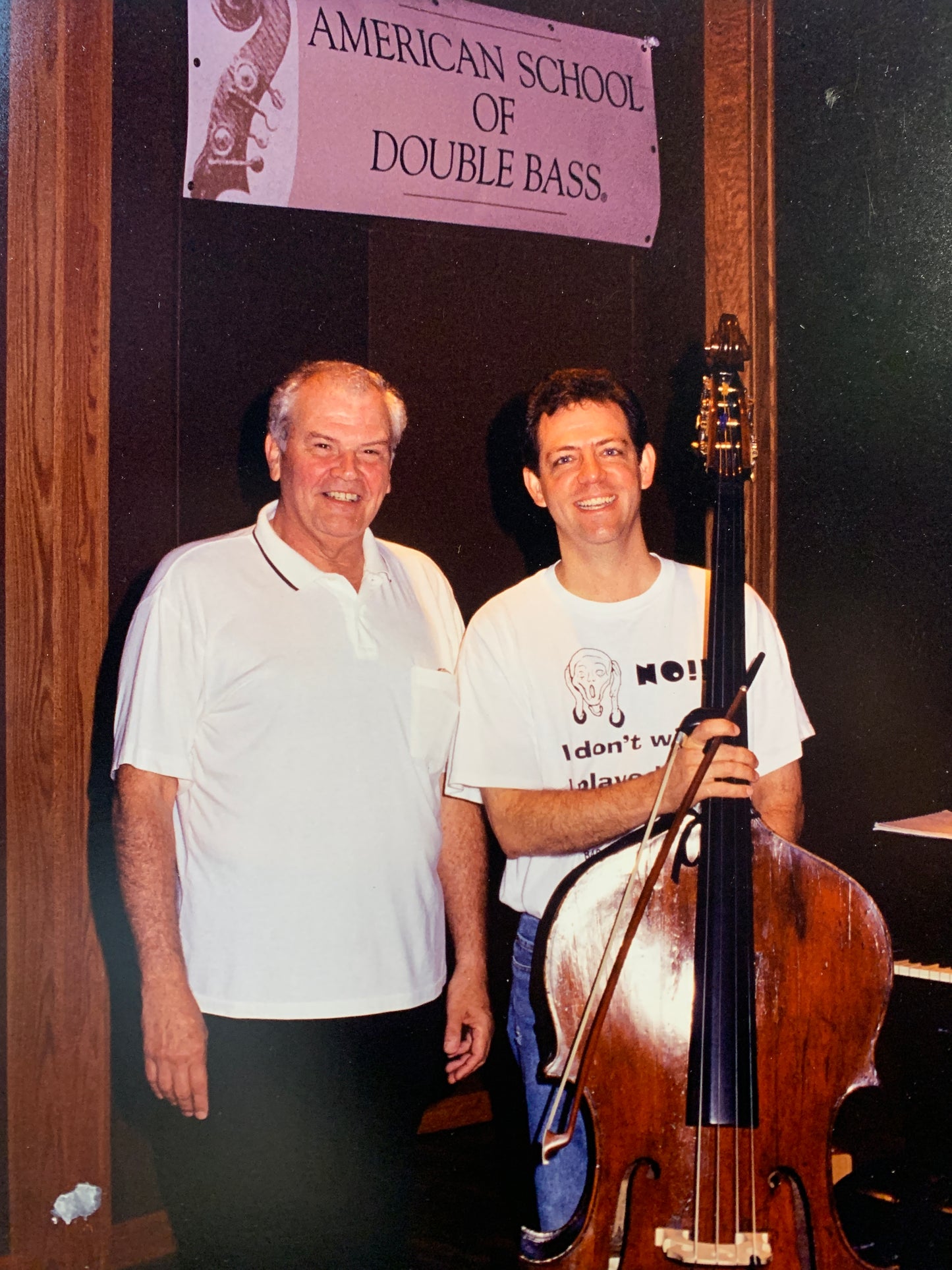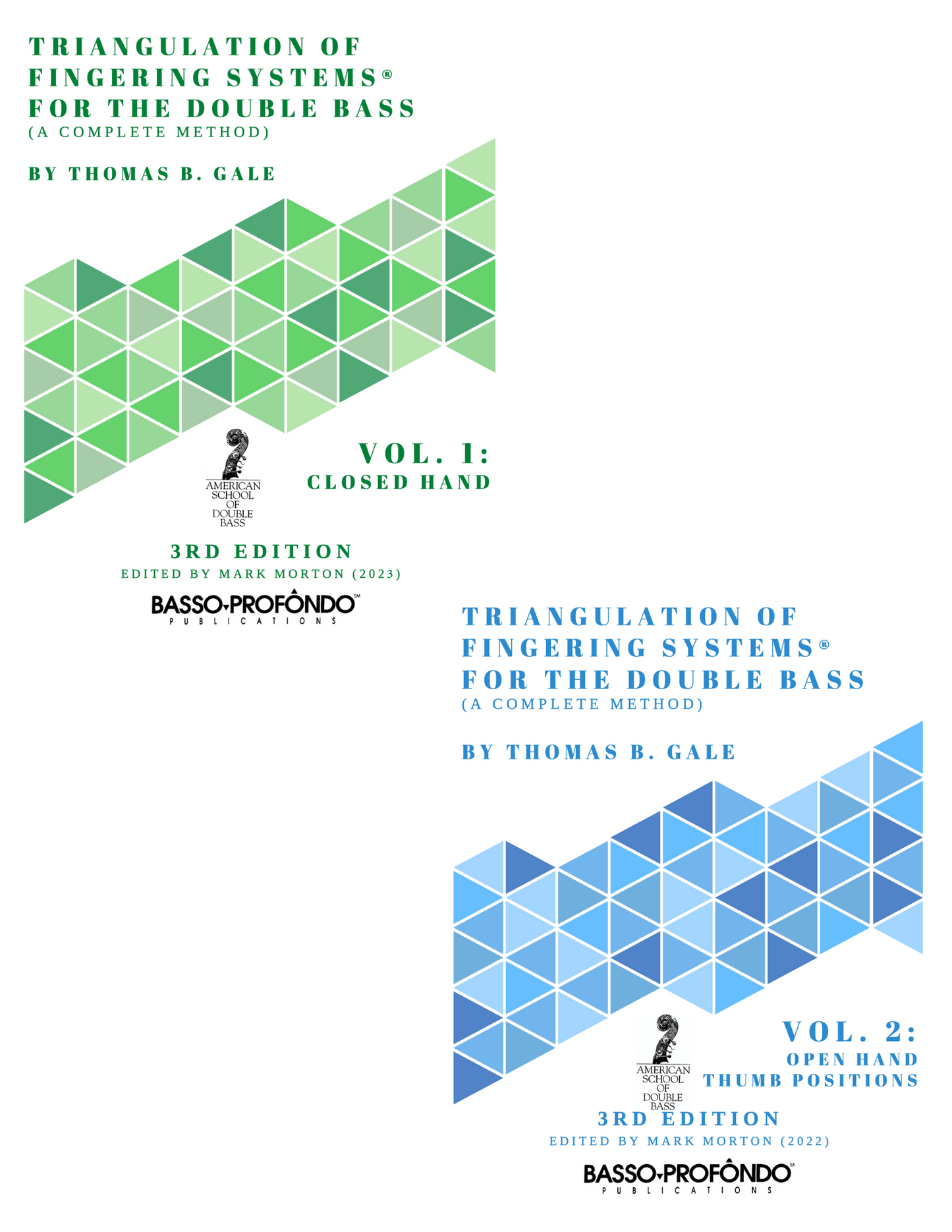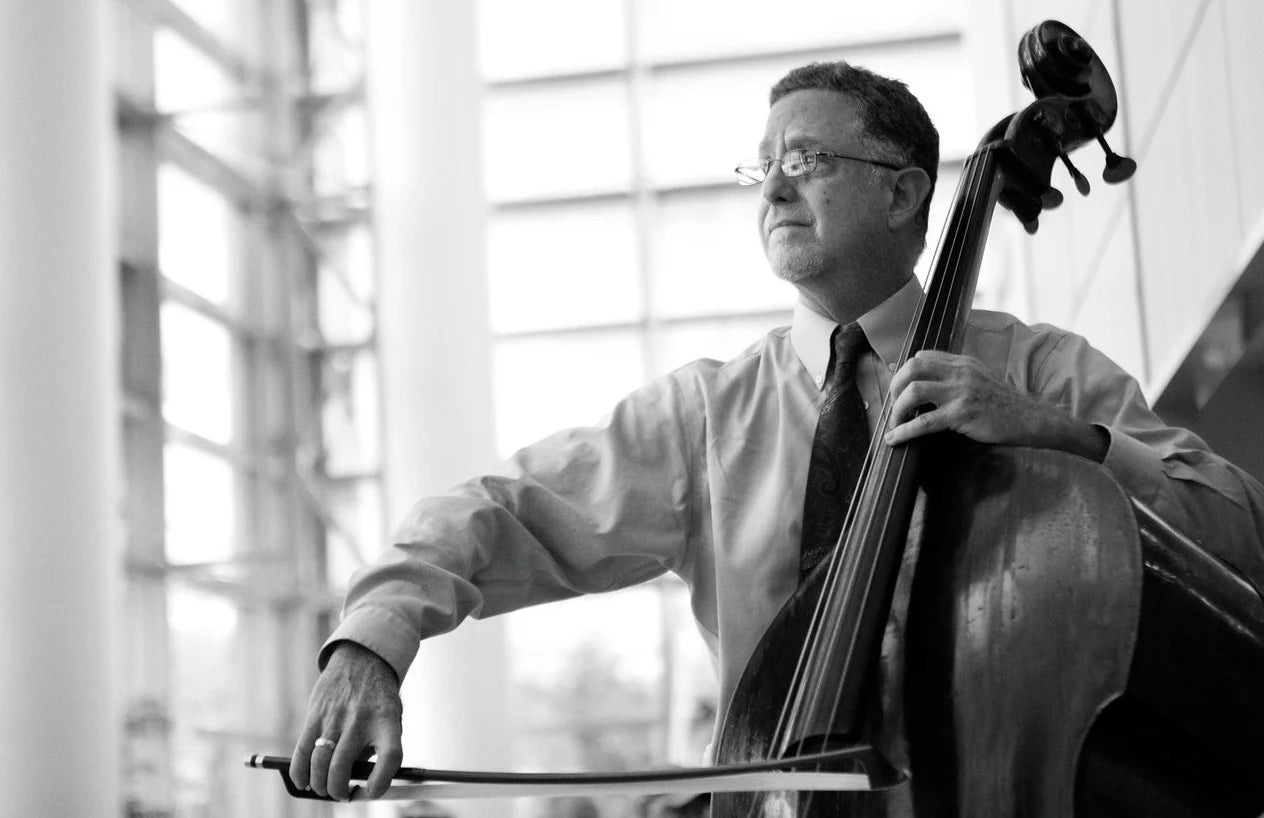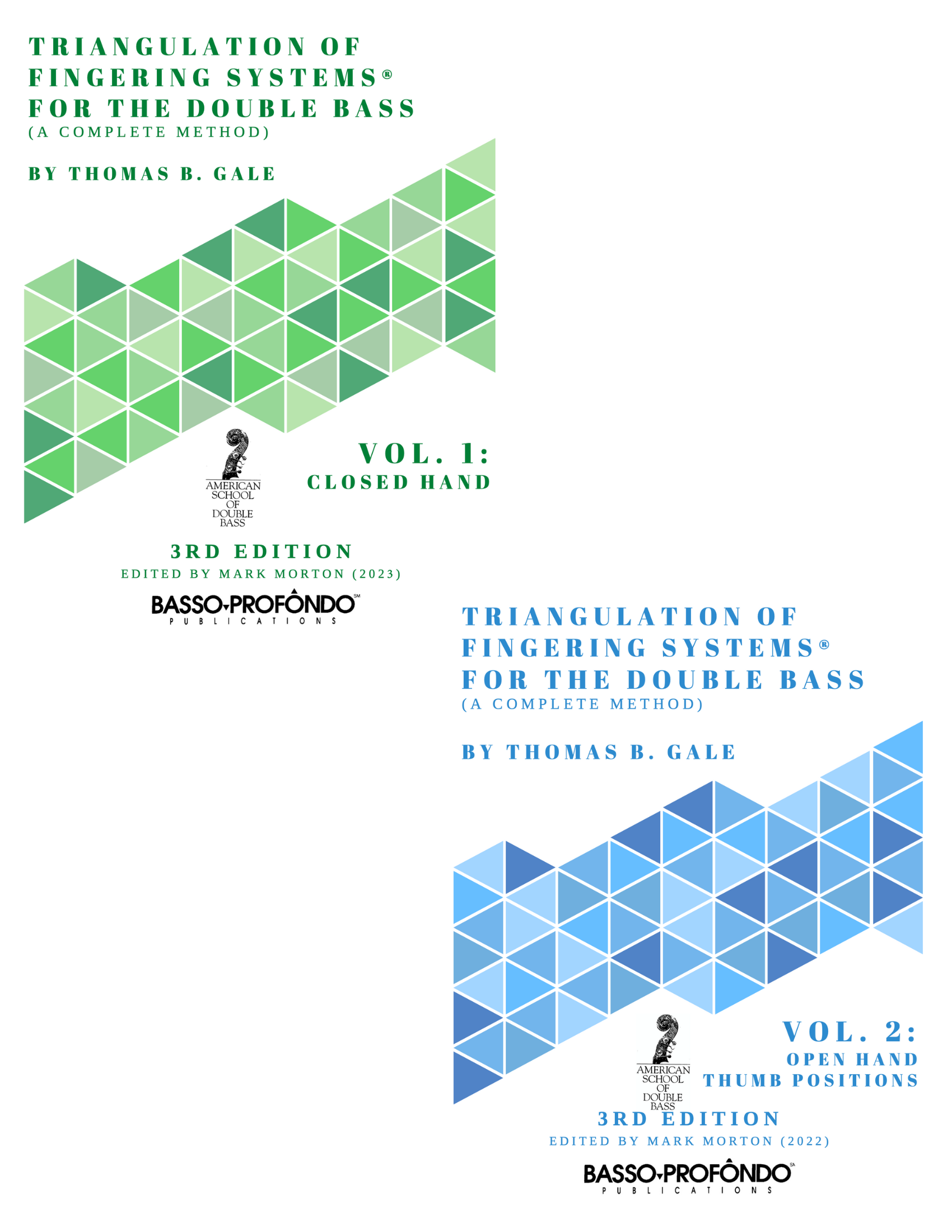1
/
of
4
Mark Morton
Thomas B. Gale: Triangulation of Fingering Systems for the Double Bass (A Complete Method), Vol. 2
Thomas B. Gale: Triangulation of Fingering Systems for the Double Bass (A Complete Method), Vol. 2
Regular price
$14.95 USD
Regular price
Sale price
$14.95 USD
Unit price
/
per
Couldn't load pickup availability
About the Book
The second volume (of two) of a complete method that examines three systems of left-hand technique on the double bass: 1) Closed Hand (Simandl 1-2-4), 2) Open Hand (extension fingering 1-2-3-4), and 3) Thumb Positions. Vol. 2 focuses primarily on Open Hand and Thumb Positions
61 pages
Purchase Volumes 1 & 2 and save 16% on your purchase.
This triumvirate of fingering systems is comprised of:
1. CLOSED HAND (1-2-4)
2. OPEN HAND (1-2-3-4)
3. THUMB POSITION (thumb-1-2-3) - including below the octave harmonic
